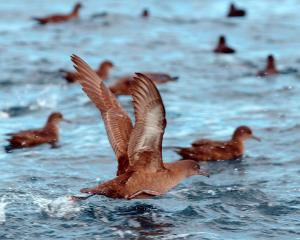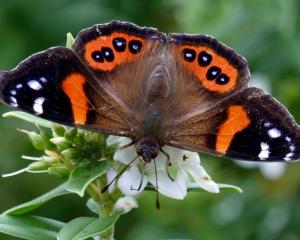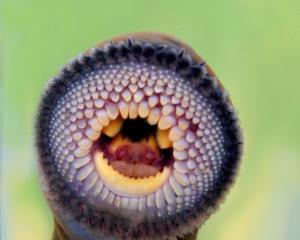
Every time I drive up the Caversham Valley towards Lookout Point along the Southern Motorway, I think about peripatus. Indeed, as my family are only too aware, I am likely to start talking about peripatus, too. It must be a "dad" thing, the same places triggering the same car conversation every single time!
But what on earth is a peripatus?
A quick google might turn up "living fossil" and "missing link", but neither of these now outdated phrases gives a true picture of this evolutionary wonder.
In a country full of rather special animals (tuatara, kiwi, giant landsnails), peripatus (or "velvet worms" as they are sometimes called) are often overlooked.
Perhaps this neglect is not surprising. Peripatus are never common, they live in damp, dark places (often under rotting logs in forest) and they are usually nocturnal. They move slowly: their Maori name, ngaokeoke, means "to crawl". Superficially, they look rather like a fat caterpillar, with a long pair of snail-like antennae and short, stumpy legs. Closer inspection, though, shows they really are not like snails — their eyes are at the base of the antennae not the tip — nor are they like caterpillars — their legs are not jointed. They are not worms for that matter, either — the structure of the mouthparts and the circulatory system are very different. The New Zealand species, of which there are about 30, about 10% of the world’s total, have adults anywhere from 2 to 12cm long. Most species have a soft velvety appearance, hence their alternative common name.
Peripatus are known scientifically as onychophorans (pronounced "on-ee-koff-or-ins"), which are so evolutionarily distant from other animals that they are classified in their own phylum, Onychophora. To give you an idea of how fundamental this difference is, consider that the phylum Mollusca contains animals as diverse as paua, snails, sea slugs, clams, shipworms, nautilus and octopus; the phylum Chordata includes humans, kangaroos, birds, fish, snakes and sea squirts (which do not even have a backbone).
Molecular biology has revealed that peripatus’ closest relatives are the arthropods (insects, spiders, centipedes and crabs). But "close" isn’t really the right word: peripatus are further from centipedes than oysters are from squid, or we are from sea squirts! They have been crawling along their own separate evolutionary pathway for hundreds of millions of years.
Peripatus are carnivores, eating small insects and other arthropods, sometimes even small land snails. Indeed, peripatus are active hunters, ambushing their victims by night. After being checked out as suitable by the antennae, the prey is entrapped by sticky slime shot out of two papillae either side of the peripatus’s head, before being bitten and injected with salivary digestive juices. Often the slime trap is eaten first (presumably to recover the resources expended on its production) and then the pre-digested prey is slowly devoured. If peripatus were larger and better known, they would be the stuff of nightmares!
To return to my motorway musing, I associate peripatus with the Caversham Valley because, as many of you will know, there is a small population surviving nearby. When the road was widened 10 years ago, part of this population was moved by the New Zealand Transport Agency (NZTA) to ensure its survival. Interestingly, the habitat is not pristine native bush, as it includes introduced trees and weedy ground cover. Sometimes this species, which has yet to receive a proper scientific name, has even been found in suburban gardens in the crevices of stone walls and under piles of bricks.
The main threats to the conservation of peripatus in New Zealand are the well-recognised double whammy of habitat loss and predation by introduced animals. What the Caversham example seems to show is that what matters most is that living conditions are continually damp. Peripatus cannot survive dry conditions for very long at all, but nor do they like being water-logged; like many land-dwelling invertebrates, they will drown if submerged in water. Hedgehogs and rats are likely to be the most problematic predators because of their nocturnal feeding, and need to be controlled for the longer-term survival of peripatus.
All of this means that peripatus could survive well in many places. A small copse or wild piece of garden, with rotting logs or stone walls with nooks and crannies that remain damp, but do not flood, would be ideal. Add in some judicious planting — the Dunedin peripatus seems particularly fond of kotukutuku, the tree fuchsia (Fuchsia excorticata). Then carry out some mammalian predator control. Who knows, you might find an ambush predator in your own backyard.
Hamish G. Spencer is Sesquicentennial Distinguished Professor in the Department of Zoology at the University of Otago.













